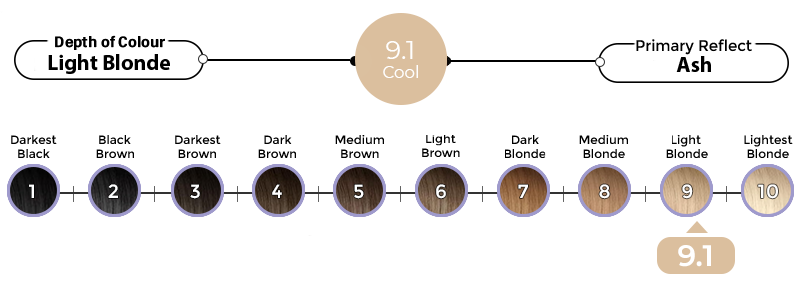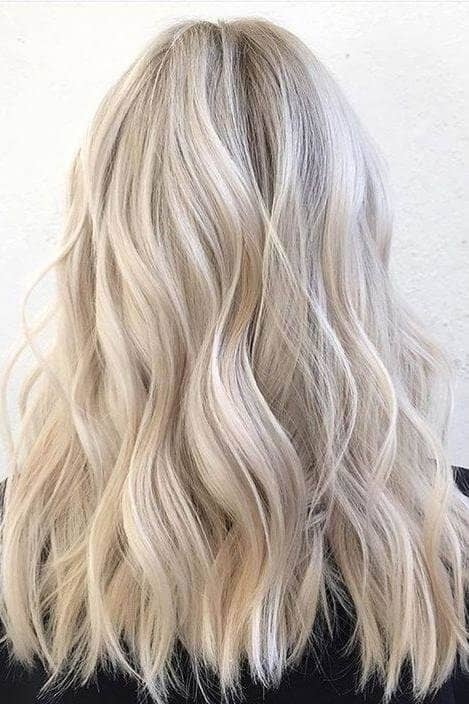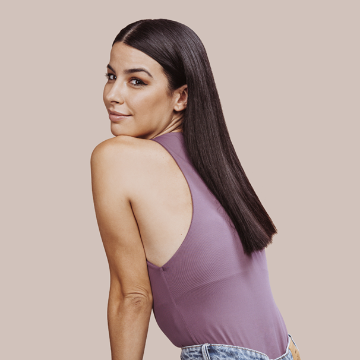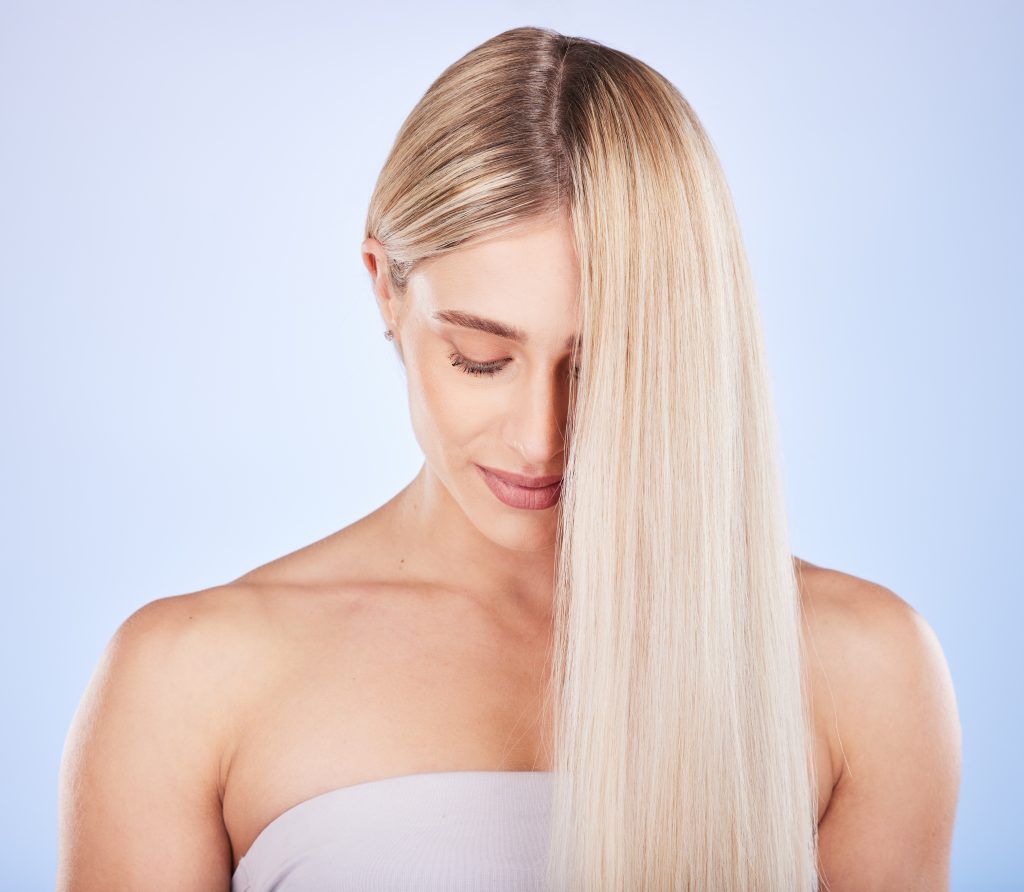One of the most common colouring challenges that colourists encounter is unwanted warmth.
Why does hair turn orange/red?
Hair colour is a combination of various colour pigments, including the visible colour and underlying colour. The darker your natural colour, the more pigment it contains.
All hair has red within its base colour. Black hair has a large quantity of dark red base pigment, while brunettes and blondes have an orange base pigment.
When you lighten your colour, you reveal red/orange pigments which usually are not visible in hair. The cool-toned colour pigments within your hair are the smallest and they are the first to be lifted out of your hair during the lightening process. The warmer (red and orange) molecules are larger than cool colour molecules, so they are the last to be lifted out of hair.
Everyone is different and some people’s hair throws more warmth, meaning that warm tones are visible after even minor colour changes and the warmer tones in their hair are difficult to manage.
Natural contributing pigment is the varying degree of warmth exposed during the lightening process.
As hair lightens, melanin is removed in order of the size of the molecule, which ranges from darkest to lightest, and as a result the underlying tones are exposed. The brassy/reddish/yellow colours are the largest colour pigments, and the most difficult colour pigment to remove, which is why all colour always gets warmer when it is lightened.
The natural pigment left in the hair at the desired level is referred to as Natural Contributing Pigment (NCP).
As all NCP is warm, typically the best option to manage unwanted warmth is to select a cool colour which will neutralise warmth. All our colours are identified by their colour level and tone on our colour chart and on the colour product pages:

Understanding and accounting for NCP is critical in correct colour selection for colouring, and NCP must be considered to achieve a successful colour outcome.
Your hair turns brassy/orange when you lighten it because the warm colour molecules are the last to be lifted during a lightening process.
For a successful, balanced lighter colour outcome, you need to first lift out all the warm colour pigments.
How do I get rid of unwanted orange/brassiness?
If you have brassiness in your colour, you can either:
- Lighten your hair further to remove all the warm pigments and recolour your hair
- Add some depth and cool secondary tones
- Counter-balance unwanted warm tones by adding cool tones with a toner
Lightening: If you are lightening by 1-3 colour levels and you have previously had challenges with unwanted warmth, then it may be best to use the 27 vol developer. The 27 vol developer is stronger than our standard 20 vol developer, and it can lift more of the brassy pigments as it lightens.
If some of the brassy pigments are difficult to shift, then you may need to do a bleach wash, which will lift out more of the darker and warmer pigments from your hair. It is essential to select cool-based colours to recolour your hair after a lightening process.
Adding Depth: Adding depth will cover and conceal unwanted warmth. By adding depth you also avoid lightening your hair, and lightening by even just a little bit can reveal unwanted warmth.
Toning: A cool based toner will deposit cool tones which will counter-act and neutralise unwanted warm tones. Toning between colour applications is a gentle, effective way to manage and balance unwanted warmth.
Toners will deposit cool tones and shine only, without impacting the base colour level. They will balance and reduce unwanted brassy/orange/copper tones in the hair by counter-balancing them with cool tones.
We recommend selecting a toner which is a bit lighter than the lightest colour level in your hair. If you have highlights or any lighter pieces in your hair, select a toner which is the same level as the lightest colour in your hair.
Toners are created by blending any cool based colour with our 5 vol developer. We ship Toner kits which include everything you need for your toner application. There are toners for brunettes and blondes, from darkest brown through to lightest blonde. You can see our range of toners and order them here.



How can you prevent brassy colour outcomes in future?
Select a colour closer to your natural hair colour to avoid exposing natural warmth.
Always colour with a cool based colour when lightening as cool tones are needed to stay on top of revealed natural warmth. Choose cool colours when lightening or toning for their blue/violet undertones which will counter-balance and neutralize unwanted warmth.
I can’t stop recommending your product!! The Shade is incredible, my colour is amazing, pure, clean blonde. No brassy overtones and not a hint of purple. This is a superior product and the results I get are so much better than I was getting for $120 a month at a salon! Congratulations on an amazing product!
R. Waterhouse
The colour is excellent, and true to the images on the website, not brassy at all and I have a lot of red pigment in my hair naturally.
K. Ndaira
I was after a more ashy blonde as my blonde was starting to look a bit brassy. So I tried the San Remo after consulting with (colourist) Camilla. The result looks like I’ve had a toner put on my hair – it’s definitely more ashy so it has delivered. Also my hair feels lovely. Will continue using 😊
S. Katharine

Leave a Reply